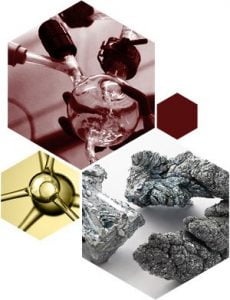
Magnesium Oxide
Properties
- We can offer items in bulk or custom. For other quantities or purities, please request a quotation.
- All prices are subject to change.
Related Products
Information about Magnesium Oxide / CAS 1309-48-4
Magnesium Oxide (MgO) is a highly versatile and widely used compound in a broad range of industries due to its unique properties, including high stability, biocompatibility, and antibacterial activity. As a white, odorless powder, MgO has numerous applications that span from materials science to environmental and biomedical fields. Its distinct characteristics, such as high thermal conductivity, alkaline nature, and ability to promote catalytic reactions.
Magnesium Oxide (MgO) is commonly used in water treatment, particularly for the remineralization of desalinated or soft water. By adjusting mineral content, Magnesia helps stabilize water quality and improve taste, ensuring it meets required health and aesthetic standards. This process is especially relevant in regions where desalinated or naturally soft water is prevalent, as low mineral content can affect water stability. In industrial and municipal water treatment, MgO serves as a controlled source of Magnesium, which can contribute to maintaining water balance without introducing unwanted impurities.
In the field of materials science, Magnesium Oxide nanoparticles are valued for their unique physicochemical properties and are being studied for their potential in drug delivery and bioimaging. Due to their high stability, biodegradability, and biocompatibility, these nanoparticles are perfect for use in advanced medical applications. They are under study for use as carriers in drug delivery systems, offering controlled release of active compounds. They also hold potential for bioimaging, as their properties allow for better visualization in medical diagnostics.
In the biomedical field, MgO nanoparticles are gaining attention for their antibacterial properties, making them suitable for medical applications like wound healing and infection prevention. They also exhibit excellent biocompatibility.
Research into the synthesis of Magnesium Oxide nanoparticles has also evolved, with greener, more environmentally friendly methods being explored to produce non-toxic and biocompatible particles. These green synthesis methods have been explored for their potential to expand the applications of MgO nanoparticles, particularly in fields like biomedicine and environmental remediation. Green synthesis not only improves the sustainability of the production process but also enhances the properties of MgO nanoparticles, making them even more applicable in cutting-edge scientific fields.
- Saberi, A., Baltatu, M. S., & Vizureanu, P. (2024). Recent advances in magnesium–magnesium oxide nanoparticle composites for Biomedical Applications. Bioengineering, 11(5), 508.
- Humaira, Ahmad, I., Shakir, H. A., Khan, M., Ali, S., Alshahrani, M., … & Irfan, M. (2024). Magnesium Oxide Nanoparticles: Biogenic Synthesis and Biomedical Applications. ChemBioEng Reviews, 11(3), 447-456.

